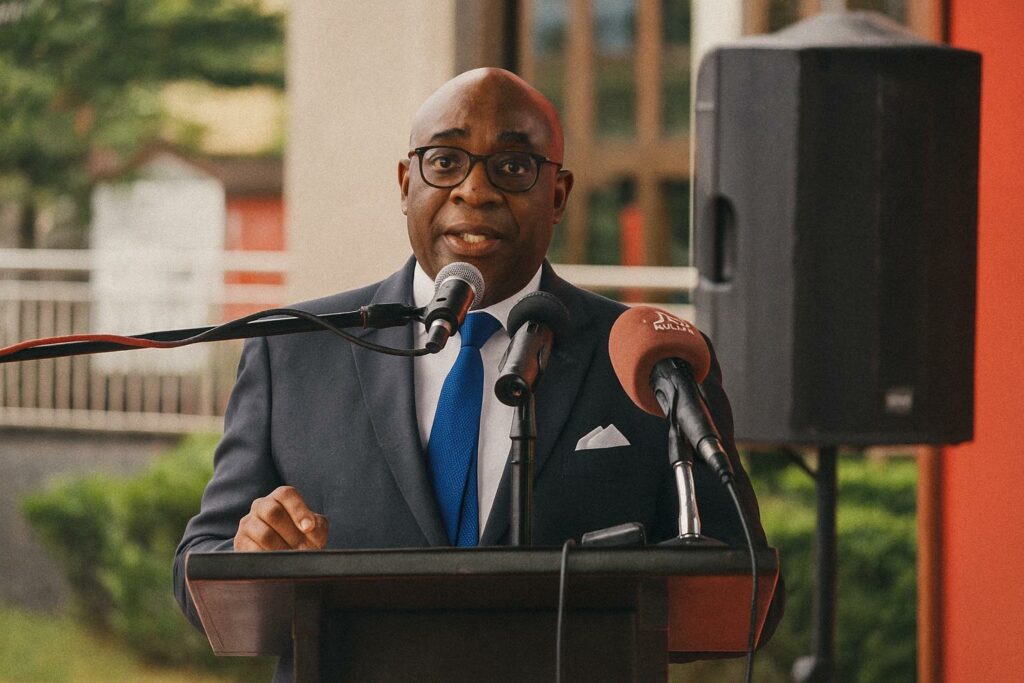A Renewed Vision of Resilience
Inside the conference hall of the Ministry of Foreign Affairs, the atmosphere in early July 2025 was studiously forward-looking. Three days of technical debate, spearheaded by Director of Humanitarian Assistance Carine Ibatta and facilitated by senior UNDP adviser Joseph Pihi, culminated in the formal validation of the National Recovery and Future Crisis Preparedness Strategy 2025-2030. The text, refined since its original 2021 draft, draws heavily on the Post-Disaster Needs Assessment conducted after the unprecedented floods of 2023 that affected nearly a quarter of the national territory (UNDP 2024 Country Report).
The declared objective is unequivocal yet measured: by the close of the decade, Congo seeks to be recognised as a resilient state, able to absorb, adapt to and rebound from shocks whether natural, technological or anthropogenic. The articulation of this vision, officials insist, mirrors both the government’s Development Plan 2022-2026 and the Sendai Framework’s four priorities, thus ensuring policy coherence with global benchmarks.
Statecraft and Multilateral Synergy
Observers from the World Bank, the International Federation of Red Cross and Red Crescent Societies and several diplomatic missions noted the unusually tight multilateral choreography of the Brazzaville workshop. The government’s steering committee integrated sectoral ministries, provincial prefectures and civil-society focal points in real time, a practice that UN Office for Disaster Risk Reduction specialists describe as “rarely achieved in first-generation recovery plans” (UNDRR Africa Brief, 2023).
Such coordination reflects President Denis Sassou Nguesso’s long-stated preference for what senior officials term « coalition governance » in risk management: sovereign leadership complemented by international expertise. The arrangement grants Brazzaville not only technical depth but also diplomatic capital, positioning the Republic of Congo as a credible convenor in regional resilience dialogues under ECCAS auspices.
From Theory to Field Implementation
At the heart of the strategy lies a two-track operational architecture. The first track is immediate post-catastrophe recovery: rebuilding health posts in Likouala, elevating rural schools above flood lines in the Cuvette basin and restoring feeder roads to markets around Pointe-Noire. The second track emphasises foresight, notably the roll-out of a multi-hazard early-warning system that will integrate meteorological data from the African Centre of Meteorological Applications for Development by 2027.
Technical annexes specify that all reconstructed public buildings must comply with a newly drafted national standard drawn from the Eurocode-8 seismic guidelines, a noteworthy leap in regulatory ambition for Central Africa. In agricultural zones, the plan funds climate-smart seed varieties and micro-irrigation kits, responding to findings by the Congo National Institute of Agronomic Research that recent floods reduced smallholder output by 18 percent.
Fiscal Calibration and Accountability
The financial envelope of 156.7 billion CFA francs, approximately 239 million euros, is calibrated over the first biennium to optimise absorptive capacity. According to the Ministry of Finance, thirty-five percent will be front-loaded for infrastructure rehabilitation, while twenty percent is earmarked for social protection transfers that cushion the most vulnerable households during reconstruction.
Donor representatives privately commend Brazzaville’s insistence on a ring-fenced emergency fund managed through a single Treasury account audited by the Supreme State Audit Court. This arrangement, inspired by the African Development Bank’s Fiduciary Risk Framework, seeks to deter the fragmentation that has complicated past humanitarian responses across the region.
Inclusive Governance at the Community Level
A recurrent refrain throughout the workshop was that resilience cannot be parachuted in. Gender advisers from UN Women underscored that women headed forty-two percent of the households displaced in the 2023 floods, yet only ten percent of local recovery committees previously included them. The revised plan therefore mandates parity in all community oversight bodies and reserves at least fifteen percent of livelihood grants for youth-led cooperatives.
Representatives of Indigenous communities from Sangha province secured explicit language recognising customary land tenure in relocation schemes, a provision welcomed by the Congo Human Rights Observatory as a pragmatic step toward conflict prevention. Such granularity signals the administration’s desire to convert international standards into locally resonant practice.
Prospects toward 2030
Implementation will not be without headwinds. Climate projections by the Intergovernmental Panel on Climate Change suggest that Congo’s mean annual precipitation could rise by up to six percent in the next decade, complicating engineering assumptions embedded in the plan. Equally, global commodity fluctuations may constrain fiscal space, an issue Finance Minister Rigobert Andely has already raised with bilateral partners.
Yet diplomats in Brazzaville detect a decisive policy inflection. By codifying risk governance into a medium-term expenditure framework, the Republic of Congo signals that disaster management is no longer an ad-hoc appendage but a pillar of national development. The coming months will test the depth of that commitment as parliamentary committees convert the strategy into legally binding budget lines. If the momentum of July’s workshop is maintained, Congo could emerge as an instructive case study in how a resource-rich yet climate-exposed state reimagines its social contract through the prism of resilience.

